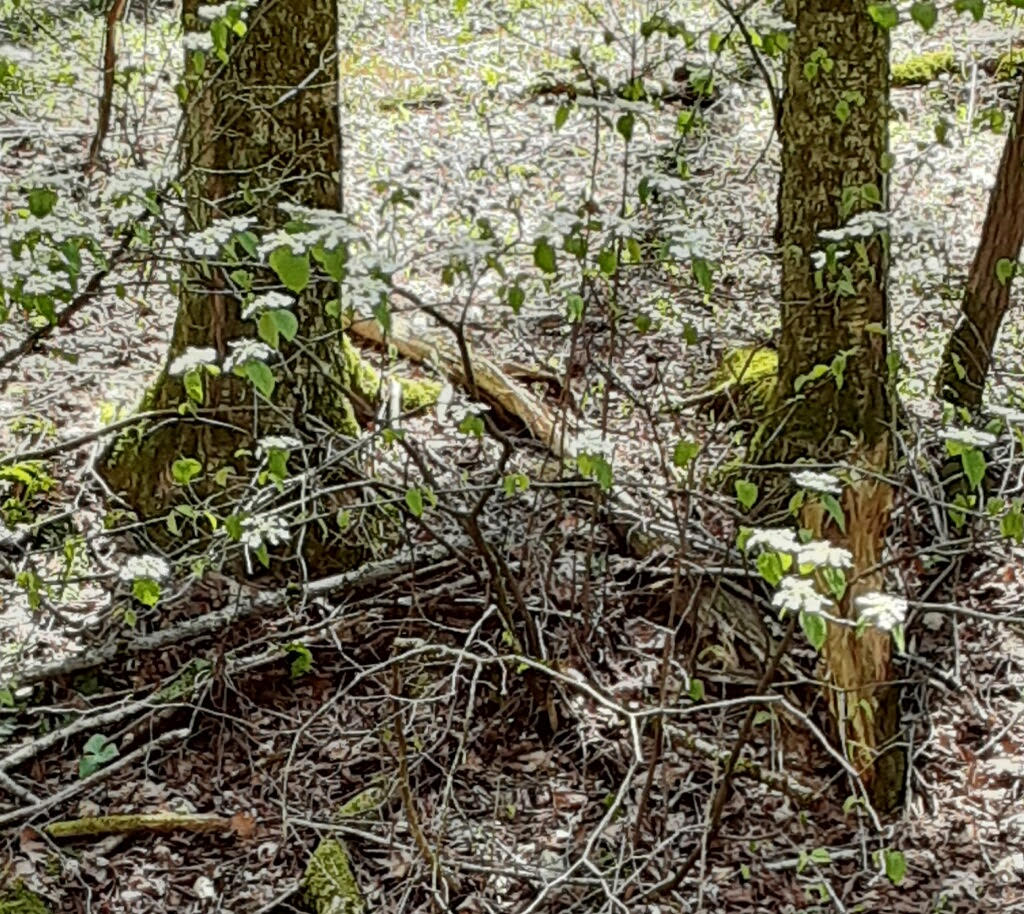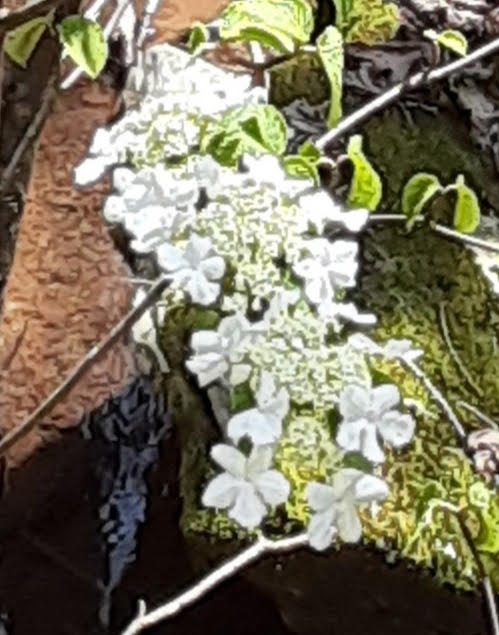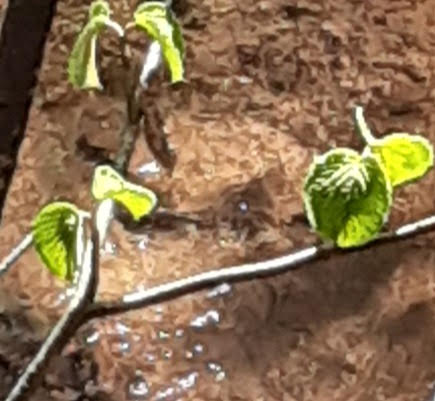By Susan Sprout
Ever been hiking off trail in the woods and get your foot caught by a shrub with drooping branches that had become rooted in the ground? You may have had a run-in with Hobblebush AKA Tangle-legs! If you can remember where you got entangled, hike back in for positive identification now because Hobblebush is in bloom from late April into May with flowers that are very distinctive and easy to recognize.

Hobblebush (Viburnum lantanoides), a native perennial shrub, is found in what Thoreau called “the under-woods” – the understory of woods. It was cool and moist there, and down a ravine that I simply could not negotiate. I sat on the ground at the top of the ridge and scooted down as far as I could, without sliding to the bottom on my bottom. I leaned forward and got some photos. What lovely white flowers greeted me! Looking down from the trail above, I had spied some bushes with white on them, but could not distinguish if it was the flash of sunlight on shiny leaves or white flowers. Yeah, flowers! Elegantly arranged on sparse branches, the blossoms are made up of two kinds of flowers –small fertile ones in the center and larger, five-petaled infertile ones on the outer edges. I get the feeling that those bigger flowers are there to get the attention of pollinators who will service the inner cluster. When pollinated, those inner flowers will make red berries that change to a bluish-black as they mature in the early fall. The bright green leaves of Hobblebush grow opposite each other on the twigs. They were wrinkled and not yet fully extended when I found them. When fully grown, they are heart-shaped with a bumpy or irregularly-textured surface.

Hobblebush is listed as “occasional” in my PA plant reference, declining due to over-browsing by deer. The ecological importance of this shrub is without doubt. Gamebirds, songbirds, small mammals, butterflies, browsers – all make use of its bounty. Humans, too, have eaten the berries or made them into jam. Rubbing the head with its crushed leaves was a medicinal use of this plant by Native Americans who suffered from migraines. So, if you have a run-in with Hobblebush while hiking, extract your foot carefully so you do not pull the roots out. If you accidently do, tamp them back down into the dirt and duff gently. We need them for the health of our woods and its inhabitants.

Editor’s note: Thank you Sue!! As someone who frequently trips while walking in the woods, I feel better now knowing I have a native shrub to blame.

